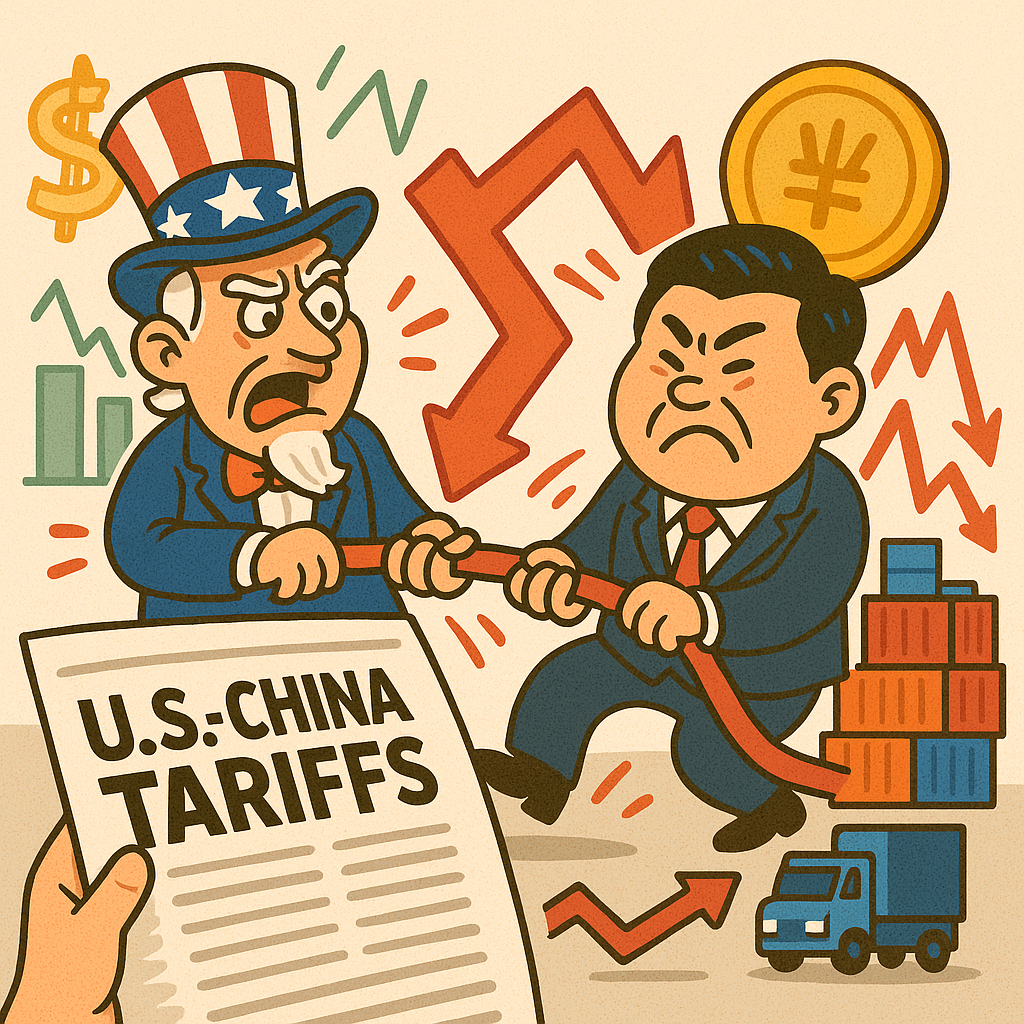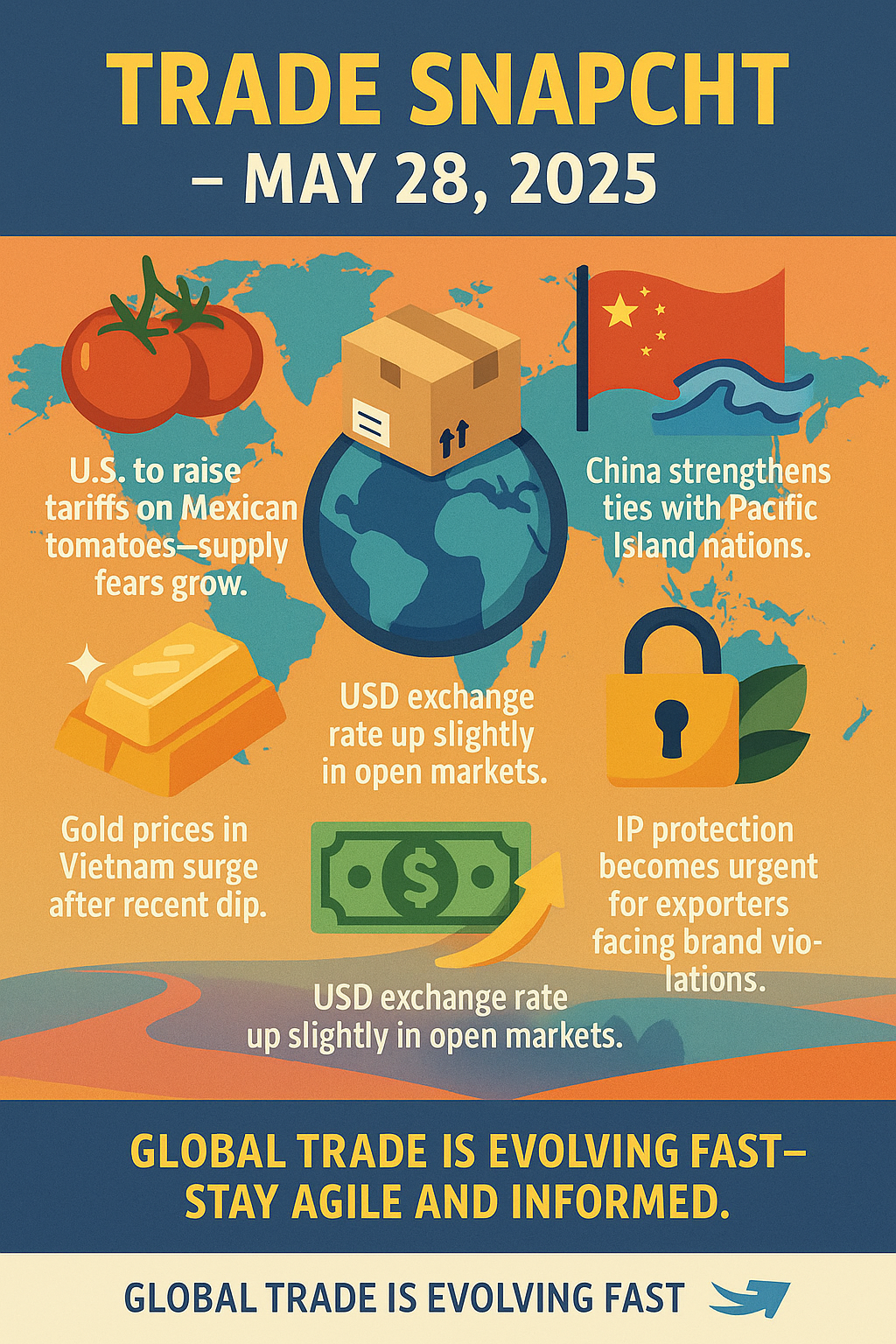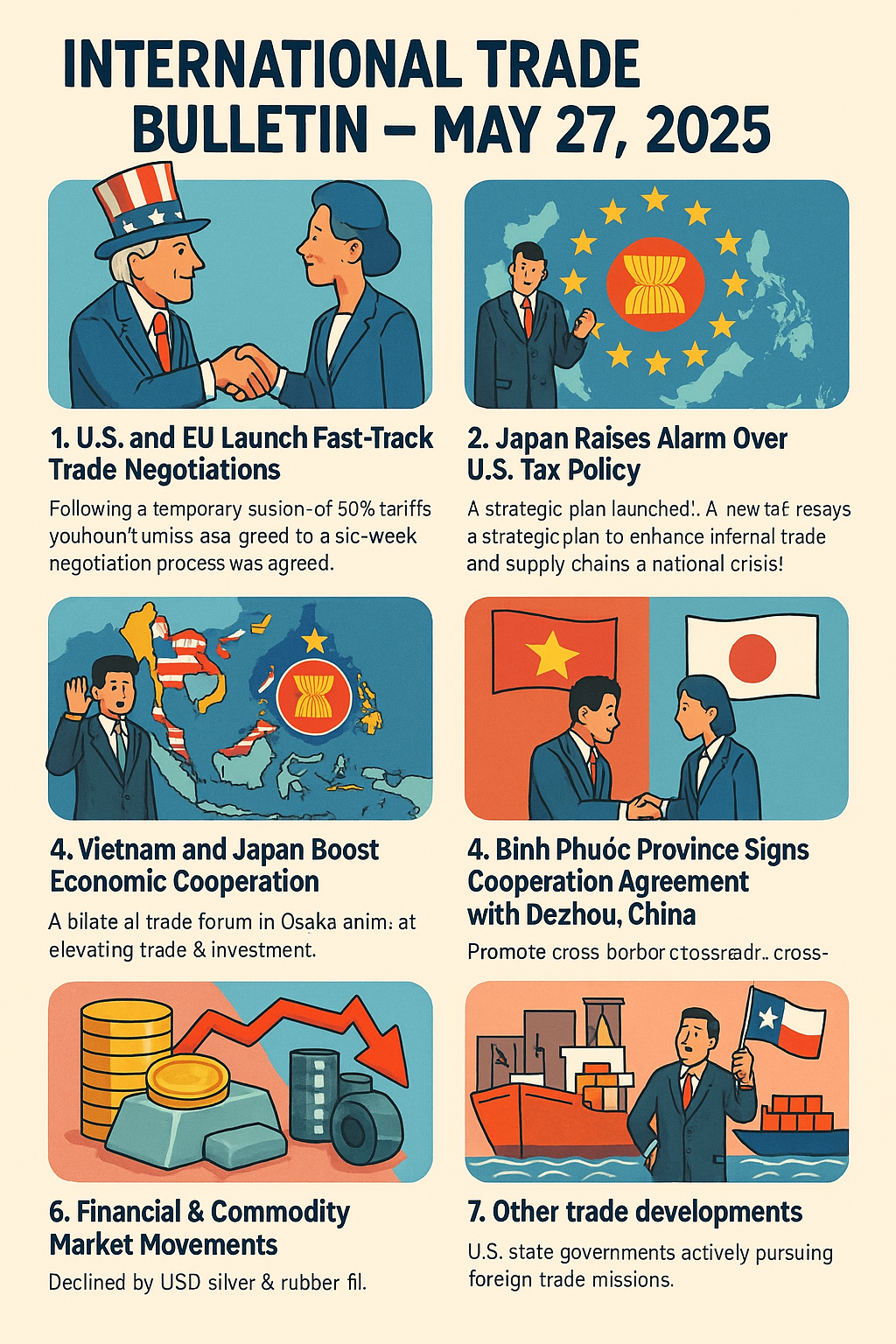US President Trump Announces Sweeping Tariff Measures Aimed at Revitalizing American Industry
US President Trump Announces Sweeping Tariff Measures Aimed at Revitalizing American Industry

Hanoi, April 2, 2025
In a bold and historic announcement from the White House today, President Donald Trump declared new tariff policies that are set to reshape the global trade landscape. In a speech delivered from the Rose Garden, President Trump stated that all goods imported into the United States will now be subject to a minimum tariff of 10%. The new policy imposes even higher tariffs on countries that have long benefited from trade imbalances with the US—with Vietnam facing an unprecedented 46% tariff on its imports.
President Trump proclaimed, “April 2 will forever be remembered as the day our American industry was reborn. For decades, our nation has been exploited by both allies and adversaries, and we cannot continue this economic surrender.” He further emphasized that these measures are a necessary step to prioritize American jobs and industries over foreign interests.
In addition to the broad tariff increase, President Trump announced a specific measure targeting imported vehicles. “From midnight tonight, a 25% tariff will be imposed on all foreign-made automobiles,” he said, adding that this step is part of a broader strategy to rebalance trade and reduce the national deficit.
Moreover, the new policy stipulates that retaliatory tariffs—ranging from 10% to up to 49%—will be levied on about 60 countries with which the US runs significant trade deficits. These retaliatory tariffs are scheduled to take effect on April 9. As an example, while China currently applies a 67% tariff on US imports, Washington will respond with a 34% tariff on Chinese goods.
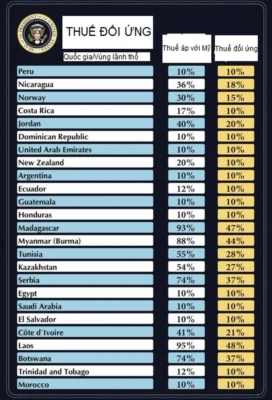
According to Reuters, the new US tariff rates for various countries and regions are as follows:
-
China: 34%
-
European Union: 20%
-
Japan: 24%
-
South Korea: 25%
-
Switzerland: 31%
-
United Kingdom: 10%
-
Malaysia: 24%
-
India: 26%
-
Brazil: 10%
-
Indonesia: 32%
-
Vietnam: 46%
-
Singapore: 10%
-
Ukraine: 10%
-
Venezuela: 15%
President Trump also called on trading partners to reform their trade practices, urging, “End tariffs, dismantle trade barriers, stop currency manipulation, and begin purchasing billions of dollars of American goods.” He declared that the revenue generated from these tariffs will be used to reduce taxes and pay down the national debt, promising that these measures will create US$6 trillion in investment—the largest tariff increase in American history.
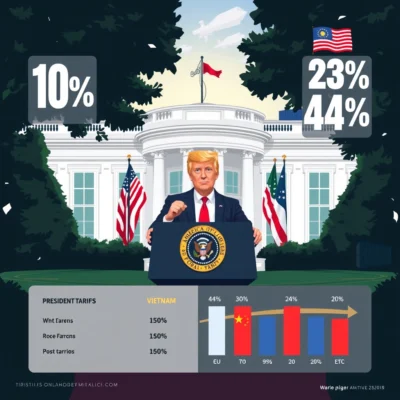
Critics note, however, that the ultimate cost of these tariffs will likely fall on US businesses and consumers. Nevertheless, President Trump is confident that these changes will “make America rich again” by restoring balance in international trade and revitalizing domestic industries.


